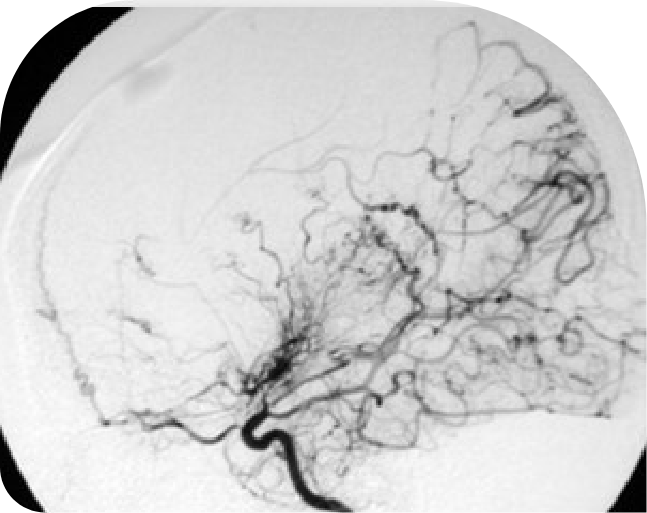Moyamoya Disease

What is moyamoya disease?
Moyamoya is a rare disease that causes blocked arteries at the base of the brain.
Moyamoya disease was first identified in Japan, and the word ‘moyamoya’ is Japanese for ‘puff of smoke’. The name describes the appearance of tiny, fragile blood vessels that are visible on the brain scan of patients with moyamoya. These tiny blood vessels form in an attempt to compensate for the blocked arteries of moyamoya disease, but they are unable to maintain a normal blood supply to the brain.
Moyamoya is a progressive disease, which means that it gets worse over time.
Although moyamoya disease occurs around the world, is more common in East Asian countries. Moyamoya is extremely rare in Australia, and affects around 1 in a million people. The disease mainly affects children between the ages of 5 and 15, or adults between the ages of 30 and 50. However, it can occur at any age.
What causes moyamoya disease?
In most cases, the cause for moyamoya disease is unknown. Around 10% of cases in Asia are hereditary. In some cases, moyamoya can be related to another condition, such as sickle cell anaemia, Down syndrome, neurofibromatosis or congenital heart disease.
What are the symptoms of moyamoya disease?
In children, the first symptom of moyamoya is often an ischaemic stroke. An ischaemic stroke is a “brain attack”, where part of the brain is deprived of oxygen. This typically causes weakness or paralysis of one side of the body.
Moyamoya disease could also cause recurrent transient ischaemic attacks (TIAs), or “mini-strokes”. TIAs have symptoms similar to a stroke but resolve fully within 24 hours.

In adults, moyamoya is more likely to cause a haemorrhagic stroke, which is bleeding into the brain.
Other symptoms of the disease include:
- Headaches
- Seizures
- Loss of consciousness
- Involuntary movements
- Impairment of mental ability, or developmental delay in children
- Problems with vision
How is moyamoya disease treated?
Because moyamoya disease leads to blocked arteries, bypass surgery is usually required to restore blood flow to affected areas of the brain. Various surgical techniques may be used, but most procedures for this condition increase the brain’s blood supply by diverting blood flow from the scalp. This is a type of bypass operation. A similar operation is often recommended in patients who have had a brain bleed from moyamoya disease.

The neurosurgeons at Macquarie Neurosurgery & Spine are skilled in the management of this rare condition. Members of our surgical team have trained at Stanford University, which is considered the world’s leading authority on moyamoya disease.
Our specialists have provided ongoing care to more than 100 Australian patients with moyamoya, making them some of the country’s most experienced specialists in the treatment of this condition.
In addition to surgery, patients with moyamoya disease may be given ongoing medication, such as aspirin, to reduce their risk of stroke.
What is the prognosis of moyamoya disease?
Bypass surgery prevents further strokes for patients with moyamoya disease. Following surgery, most patients will have no further symptoms related to the disease.
Without surgical treatment, most individuals with moyamoya disease experience multiple strokes and progressive mental decline.
Moyamoya disease can be fatal if it leads to a haemorrhagic stroke (bleeding into the brain).
MoyaMoya Australia
Moyamoya Australia is a non profit organisation who’s goal is to increase the awareness and understanding of those affected by Moyamoya disease. The organisation has a great community through their website and social media platforms. To donate or learn more about this great organisation click here.
